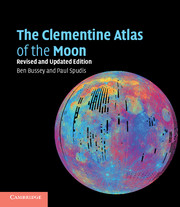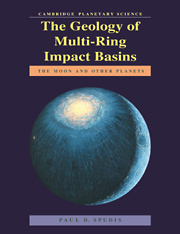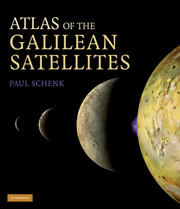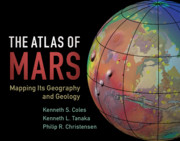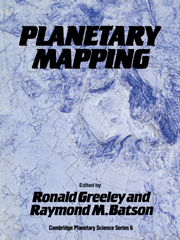The Clementine Atlas of the Moon
The highly successful Clementine mission gave scientists their first global look at the Moon. Based on information gathered from this mission combined with data from recent missions, this unique atlas contains 144 maps covering the entire lunar surface, along with colour plates showing the Moon's composition and physical properties. The first part of the atlas describes the origin and geological evolution of the Moon and gives a brief history of lunar science and exploration, while the second features double-page spreads consisting of Clementine images paired with newly created shaded-relief maps generated from LROC topography data. This edition has been fully revised and extended to cover the armada of new missions that have launched since 2004. With one of the most complete and up-to-date lunar nomenclature databases, this is an indispensable reference for professional planetary and space scientists, amateur astronomers, and lunar enthusiasts.
- Features 144 Clementine and LROC-derived annotated shaded relief LAC charts covering the entire surface of the Moon - given in uniform scale and format
- Colour plates show the lunar composition and physical properties
- Lists all named craters and other features, making it one of the most complete lunar nomenclature databases
Reviews & endorsements
'… it will most certainly appeal … to serious amateur astronomers with a keen interest in the Moon … undoubtedly the most authoritative source of lunar nomenclature currently available … the atlas is an indispensable reference to lunar surface features (especially on the far side), the geology surrounding features and lunar nomenclature.' Astronomy and Space
'[The] Clementine Atlas has quickly become one of the lunar references that I use the most. It's the most convenient and accurate resource for identifying named features. It's also a great research tool … [The] Clementine Atlas reigns as the most comprehensive atlas of the entire Moon.' Charles A. Wood, Sky and Telescope
'A substantial book, intended as a complete reference work for both professionals and the serious amateur. The text throughout is both accessible and non-technical … Technically, the authors have achieved their aim of placing the entire Moon between two covers.' Journal of the British Astronomical Association
'This is a very comprehensive Atlas of the Moon … an essential reference work for those who study and/or observe our near neighbour.' Spaceflight
'This splendid book is timely in view of the growing interest in stepping up exploration of the Moon, and will stand as a landmark publication in lunar studies. A 'must' for all those interested in the Earth's satellite.' Geological Magazine
'For students of the Moon, this is one of the best photographic lunar atlas reference books, because it covers almost the entire lunar surface (99%) … Overall I highly recommend this book for all lunar observers of all expertise levels.' Robert A. Garfinkle, Association of Lunar and Planetary Observers
Product details
November 2012Paperback
9780521141017
380 pages
276 × 241 × 12 mm
1.53kg
174 b/w illus. 8 colour illus. 5 tables
Out of stock in print form with no current plan to reprint
Table of Contents
- Preface
- Part I. The Moon
- Part II. The Clementine Lunar Atlas
- Gazetteer
- Index.

